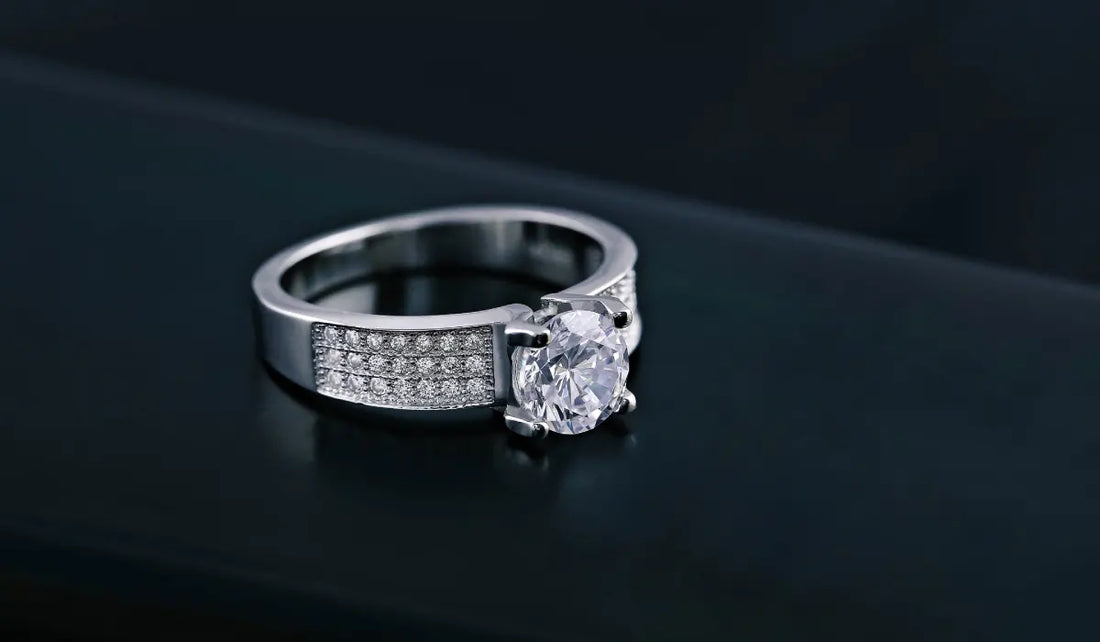
How to Verify the Authenticity of Diamond Jewelry: Certification, Grading, and Expert Tips
Share
When investing in diamond jewelry, especially high-value pieces, ensuring authenticity is crucial. Verifying the quality and genuineness of a diamond isn't just about trusting the seller's word. You need to understand the importance of certifications, grading standards, and a few expert tips to guarantee you're getting the real deal. This guide will help you navigate the process of verifying diamond authenticity, focusing on certification and expert advice.
1. Diamond Certifications: What You Need to Know
A diamond certification, or grading report, is a document issued by an independent gemological lab that evaluates a diamond based on specific criteria. These certifications serve as proof of the diamond’s quality, making them essential for verifying authenticity. The most reputable diamond certification organizations include:
GIA (Gemological Institute of America):
Known as the gold standard in diamond certification, GIA is the most trusted authority. They grade diamonds on the 4Cs—Cut, Clarity, Color, and Carat Weight—ensuring unbiased, accurate results. A GIA certification assures the highest level of confidence in the diamond's quality.
IGI (International Gemological Institute):
Another widely respected gemological lab, IGI is known for grading both natural and lab-grown diamonds. IGI reports are detailed and comprehensive, providing consumers with reliable information about their diamond.
AGS (American Gem Society):
The AGS is renowned for its rigorous grading standards, especially for diamond cut. Their certificates are widely regarded as highly reliable, and they focus on a more scientific approach to evaluating diamond quality.
2. Key Elements in a Diamond Certification
A reliable diamond certification will detail several factors that influence the diamond's overall value. Here's what you should look for:
4Cs:
A grading report will provide specifics on the diamond's Cut, Clarity, Color, and Carat weight. These factors are critical in determining the diamond's beauty and price.
Measurements & Proportions:
Certifications also list the diamond’s precise dimensions, helping experts assess the quality of the cut and its overall brilliance.
Fluorescence:
Some diamonds emit a slight glow under UV light, known as fluorescence. A grading report will mention this, as it can slightly affect a diamond’s appearance and value.
Laser Inscription:
Many diamonds come with a microscopic laser inscription on the girdle, containing a unique identification number corresponding to the certificate. This is a useful feature to verify authenticity.
3. Expert Tips for Verifying Diamond Authenticity
Apart from understanding certifications, there are a few additional expert tips you can follow to ensure you're purchasing genuine diamond jewelry.
Always Ask for Certification:
A reputable jeweler will always provide a certification from a recognized grading lab. Avoid buying diamonds without certified documentation, as this puts you at risk of purchasing a lower-quality or counterfeit stone.
Match the Diamond to the Certificate:
When buying a diamond, make sure the certificate matches the diamond you’re purchasing. Check the laser inscription (if present) to confirm the diamond’s identification number matches the one on the report.
Use a Loupe to Inspect:
A jeweler’s loupe is a small magnifying glass used to inspect diamonds. With a loupe, you can check the diamond for clarity characteristics (inclusions or blemishes) that should be noted on the certification. If the diamond’s appearance doesn’t match the report, this raises red flags.
Consult with a Trusted Jeweler:
Always purchase diamonds from a jeweler with a solid reputation. They can walk you through the certification and grading process, and answer any questions about the diamond's authenticity.
Consider Professional Appraisals:
If you’re unsure about the certification or quality of the diamond, consider getting it independently appraised. A certified gemologist can confirm the authenticity and grading.
4. Red Flags to Watch For
No Certification:
If a jeweler doesn’t provide certification for a high-value diamond, it’s a sign to walk away. Always demand proper documentation.
Unrecognized Labs:
Be cautious of certifications from unknown or less reputable labs. Stick to diamonds certified by GIA, IGI, AGS, or other recognized grading bodies to ensure reliable and consistent grading.
Significant Price Gaps:
If a diamond's price seems too good to be true, it probably is. Authentic diamonds with proper certification have consistent market pricing. Extreme discounts could indicate issues with the diamond's quality or authenticity.
Conclusion
Verifying the authenticity of diamond jewelry requires a careful review of certifications and grading reports. GIA, IGI, and AGS are among the most trusted certification bodies, and their reports provide you with the key information you need to evaluate a diamond. Pair these certifications with expert tips like matching laser inscriptions, inspecting the diamond under a loupe, and consulting with trusted jewelers to make an informed and confident purchase. Always prioritize buying certified diamonds to safeguard your investment and ensure you’re getting genuine, high-quality jewelry.
